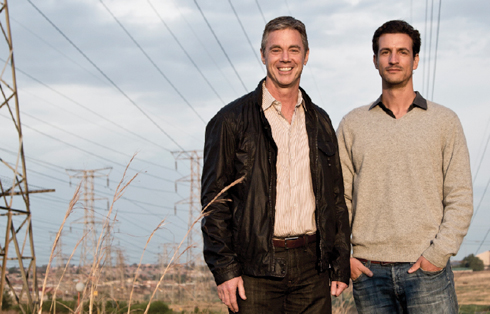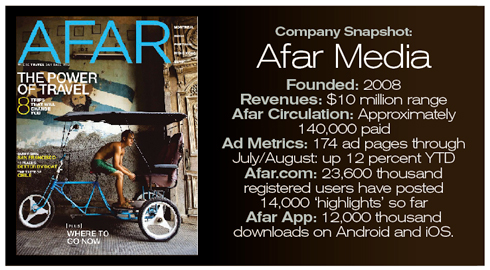ScienceDaily (Nov. 8, 2012) ? Hydrogen is an attractive fuel source because it can easily be converted into electric energy and gives off no greenhouse emissions. A group of chemists at the University of Rochester is adding to its appeal by increasing the output and lowering the cost of current light-driven hydrogen-production systems.
The work was done by graduate students Zhiji Han and Fen Qiu, as part of a collaboration between chemistry professors Richard Eisenberg, Todd Krauss, and Patrick Holland, which is funded by the U.S. Department of Energy. Their paper will be published later this month in the journal Science.
The chemists say their work advances what is sometimes considered the "holy grail" of energy science -- efficiently using sunlight to provide clean, carbon-free energy for vehicles and anything that requires electricity.
One disadvantage of current methods of hydrogen production has been the lack of durability in the light-absorbing material, but the Rochester scientists were able to overcome that problem by incorporating nanocrystals. "Organic molecules are typically used to capture light in photocatalytic systems," said Krauss, who has been working in the field of nanocrystals for over 20 years. "The problem is they only last hours, or, if you're lucky, a day. These nanocrystals performed without any sign of deterioration for at least two weeks."
Richard Eisenberg, the Tracy H. Harris Professor of Chemistry, has spent two decades working on solar energy systems. During that time, his systems have typically generated 10,000 instances -- called turnovers -- of hydrogen atoms being formed without having to replace any components. With the nanocrystals, Eisenberg and his colleagues witnessed turnovers in excess of 600,000.
The researchers managed to overcome other disadvantages of traditional photocatalytic systems. "People have typically used catalysts made from platinum and other expensive metals," Holland said. "It would be much more sustainable if we used metals that were more easily found on the Earth, more affordable, and lower in toxicity. That would include metals, such as nickel."
Holland said their work is still in the "basic research stage," making it impossible to provide cost comparisons with other energy production systems. But he points out that nickel currently sells for about $8 per pound, while the cost of platinum is $24,000 per pound.
While all three researchers say the commercial implementation of their work is years off, Holland points out that an efficient, low-cost system would have uses beyond energy. "Any industry that requires large amounts of hydrogen would benefit, including pharmaceuticals and fertilizers," said Holland.
The process developed by Holland, Eisenberg, and Krauss is similar to other photocatalytic systems; they needed a chromophore (the light-absorbing material), a catalyst to combine protons and electrons, and a solution, which in this case is water. Krauss, an expert in nanocrystals, provided cadmium selenide (CdSe) quantum dots (nanocrystals) as the chromophore. Holland, whose expertise lies in catalysis and nickel research, supplied a nickel catalyst (nickel nitrate). The nanocrystals were capped with DHLA (dihydrolipoic acid) to make them soluble, and ascorbic acid was added to the water as an electron donor.
Photons from a light source excite electrons in the nanocrystals and transfer them to the nickel catalyst. When two electrons are available, they combine on the catalyst with protons from water, to form a hydrogen molecule (H2).
This system was so robust that it kept producing hydrogen until the source of electrons was removed after two weeks. "Presumably, it could continue even longer, but we ran out of patience!" said Holland.
One of the next steps will be to look at the nature of the nanocrystal. "Some nanocrystals are like M&Ms -- they have a core with a shell around it," said Eisenberg. "Ours is just like the core. So we need to consider if they would they work better if they were enclosed in shells."
Share this story on Facebook, Twitter, and Google:
Other social bookmarking and sharing tools:
Story Source:
The above story is reprinted from materials provided by University of Rochester.
Note: Materials may be edited for content and length. For further information, please contact the source cited above.
Journal Reference:
- Zhiji Han, Fen Qiu, Richard Eisenberg, Patrick L. Holland, and Todd D. Krauss. Robust Photogeneration of H2 in Water Using Semiconductor Nanocrystals and a Nickel Catalyst. Science, 8 November 2012 DOI: 10.1126/science.1227775
Note: If no author is given, the source is cited instead.
Disclaimer: Views expressed in this article do not necessarily reflect those of ScienceDaily or its staff.
bcs national championship 2012 university of alabama national championship game bcs game lsu vs alabama college football college football

 Molly & I have been part of four church plants, but this is the first in which we?ve had property to steward. Ironic, because the vision He gave for The Mission was to train missionaries to function outside a church context. Then he puts us in a building. The Lord must?ve chuckled when He gave us a church building and our launch team blinked in confusion.
Molly & I have been part of four church plants, but this is the first in which we?ve had property to steward. Ironic, because the vision He gave for The Mission was to train missionaries to function outside a church context. Then he puts us in a building. The Lord must?ve chuckled when He gave us a church building and our launch team blinked in confusion. So it seems strange that a church dedicated to incarnational living outside the building would spend a work day investing time, energy, & resources in the campus. Why would we do such a thing? Did we sell out? Have we gone attractional?
So it seems strange that a church dedicated to incarnational living outside the building would spend a work day investing time, energy, & resources in the campus. Why would we do such a thing? Did we sell out? Have we gone attractional? As for us, we?re fine with the place as it is. It?s just a building. Our friendships in community take place far more frequently outside 3224 Cheek-Sparger Rd than within. Our goal was to help put strangers at ease by giving them a glimpse of the beauty and care our Creator taught us. If our efforts to redeem (cleaning & painting) and restore (gardening and construction) help them encounter Christ in His body, then they?re worth the sweat and time.
As for us, we?re fine with the place as it is. It?s just a building. Our friendships in community take place far more frequently outside 3224 Cheek-Sparger Rd than within. Our goal was to help put strangers at ease by giving them a glimpse of the beauty and care our Creator taught us. If our efforts to redeem (cleaning & painting) and restore (gardening and construction) help them encounter Christ in His body, then they?re worth the sweat and time. Men don?t seem to become friends just by talking (though ladies certainly seem to). But put us together on a task ? like felling a tree, moving something heavy, or building something new ? and the project connects us. The small talk-type fluff shakes off and we bond ? basically in battle. Fighting side-by-side, trust and respect are earned. We connect as we conquer the obstacle before us.
Men don?t seem to become friends just by talking (though ladies certainly seem to). But put us together on a task ? like felling a tree, moving something heavy, or building something new ? and the project connects us. The small talk-type fluff shakes off and we bond ? basically in battle. Fighting side-by-side, trust and respect are earned. We connect as we conquer the obstacle before us. People who hadn?t known each other well (some of whom perhaps no one truly knows well), were talking and laughing together. Walls had come down ? both literally and metaphorically. After working together, the Father?s kids left able to know, love, & serve one another better.
People who hadn?t known each other well (some of whom perhaps no one truly knows well), were talking and laughing together. Walls had come down ? both literally and metaphorically. After working together, the Father?s kids left able to know, love, & serve one another better. I praise you heavenly Father, for giving us eyes to see needs, feet to propel us out of laziness, hands to create beauty, ears to enjoy song & laughter, and hearts devoted to you. Thank you for giving us a brisk October morning to come together as a family of friends to serve people we haven?t yet met.
I praise you heavenly Father, for giving us eyes to see needs, feet to propel us out of laziness, hands to create beauty, ears to enjoy song & laughter, and hearts devoted to you. Thank you for giving us a brisk October morning to come together as a family of friends to serve people we haven?t yet met. 


 The idea has been floated more than once over the last few weeks:? How about we take all the money that candidates have spent on advertising time, polls, yard signs, and general campaigning and just use that to pay down the deficit?? While those who suggest this wacky plan do so knowing that it will never actually take effect, there is something to be said for directly allocating our money where we need it most and getting rid of those annoying ads that have dominated the airwaves of late.
The idea has been floated more than once over the last few weeks:? How about we take all the money that candidates have spent on advertising time, polls, yard signs, and general campaigning and just use that to pay down the deficit?? While those who suggest this wacky plan do so knowing that it will never actually take effect, there is something to be said for directly allocating our money where we need it most and getting rid of those annoying ads that have dominated the airwaves of late. New parents always appreciate the gift of homemade meals, but here's an idea for a gift that keeps on giving: a collection of your best slow cooker recipes and a new slow cooker, if you know your friends don't have one.
New parents always appreciate the gift of homemade meals, but here's an idea for a gift that keeps on giving: a collection of your best slow cooker recipes and a new slow cooker, if you know your friends don't have one.
